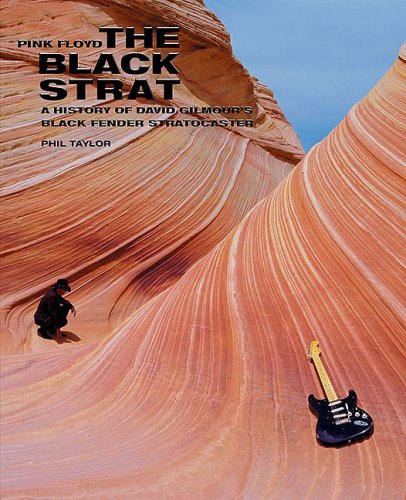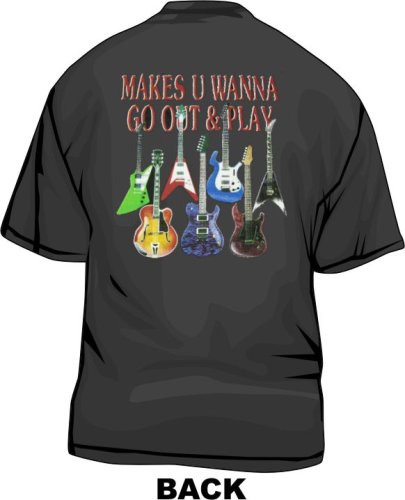
The Black Strat book is the first and only accurate and knowledgeable account of David Gilmour's favorite Stratocaster guitar. Written by Phil Taylor - David's personal guitar technician since 1974 - to coincide with the release of the long awaited and much requested Fender 'David Gilmour Signature Strat': an instrument replicating the look, set-up, sound and feel of David's famous black guitar as it is today. The chronological story begins with David Gilmour joining Pink Floyd in early 1968, his guitar at that time, his subsequent instruments leading to the purchase of the Black Strat in 1970, and the other guitars that have come and gone. The book details all of the changes and modifications made to the Black Strat, its use on Pink Floyd tours and iconic albums, David's solo projects, and various guest appearances throughout the years.
Customer Review: Pink Floyd: The Black Strat A history of David Gilmour's Black Fender Stratocaster
After reading this book in one sitting, it became an inspiration for me to build my own Gilmour black strat. It is a must for any fan of Pink Floyd as well as David Gilmour fan. A very detailed history of the guitar and it's owner and the various changes the guitar went through 'til it reached its current state. A wealth of pictures as well as info, so much as i said that i built my own gilmour strat. The only changes i made were in the neck, it is a C-shaped but a bit smaller to fit my hand, i did put a duncan ssl5 in the bridge, but instead of the fat 50's in the neck and 69 in the middle, i put 2 duncan ssl-3 in the neck and middle but the middle pickup is reverse wound, and instead of drilling a hole in the pickguard for the extra switch to turn on the neck pickup, i used a push-pull pot on the lower tone control to add the neck pickup. I decided to do the N.O.S version instead of the relic'd version. See if this book had that kind of inspiration for me, imagine what it may do for you. Go out and get it, enjoy yourself reading it, even if you don't build guitars.
Customer Review: David Gilmour's Black Strat-GRN
I, at first, scoffed at this story of David Gilmour's Black Strat; however, the more I thought about it, the more I believed that it would offer something of a storied journey. This proved to be a good historical read and journey of not only David and Phil Taylor, Daivid's Guitar Technician, but also of the journey of the Black Strat and several other Floydian Guitars. I am glad that I purchased and read this account.
David Gilmour, like his Pink Floyd predecessor Syd Barrett, played a Telecaster initially, but he soon became one of the first British rock guitar legends to favor the Fender Stratocaster and to create a signature sound with the instrument. His parents bought the Tele for Davids 21st birthday, and he played it for a year (including on the Saucerful of Secrets record) until it was lost by an airline.
Upon officially joining Pink Floyd, Gilmour purchased a custom Stratocaster (the first of many) at a Cambridge music store. During the early Pink Floyd years, Gilmour played a Strat almost exclusively, taking full advantage of its wide tonal palette and vibrato bar in his style. He used a Lewis 24-fret electric guitar on rare occasions for its extended range, as in the solo of Money, and continued to employ a Tele sporadically in the repertory. Gilmour strung his electric guitars with Gibson Sonomatic strings made of a customized light-top (using the standard E and B for the B and G) and heavy-bottom set gauged .010, .012, .016, .028, .038, and .050. He used a Herco heavy-gauge pick.
David Gilmours earliest amp setup with Pink Floyd consisted of a Selmer 50-watt head with a 412 speaker cabinet. By 1970, he found his signature sound with a stack made of Hiwatt 100-watt heads with WEM 412 cabinets. The Hiwatt/WEM combination can be heard conspicuously on Meddle and Dark Side of the Moon. In the studio, he sometimes added a Fender Twin Reverb combo amp with two 12-inch speakers to his lineup for certain parts, as on Dark Side of the Moon.
David Gilmours early Floyd effects consisted of a Binson Echorec tape delay (like Barrett, he used this device from his first days with the band), a Dallas-Arbiter Fuzzface fuzz box, Uni-Vibe pedal, Vox wah-wah pedal, a DeArmond volume pedal, and Leslie and Yamaha RA-200 rotating speaker cabinets. The latter were routed through the output sections of Hiwatt heads and then to WEM 412 cabinets. In 1972, his effects boxes were mounted in a custom cabinet, and his array of processors grew to include a second Binson Echorec and a second Fuzzface, an MXR Phase 90, a Crybaby wah-wah, an Electro-Harmonix Electric Mistress flanger, Big Muff fuzz, an Orange treble and bass booster, and a custom-built tone pedal.
Additionally, Gilmour used studio effects like ADT (Automatic Double Tracking, a favorite studio processor first developed at Abbey Road Studios for the Beatles), Kepex for tremolo, various tape effects, studio echo chambers, and backwards guitar. He also employed an EMS Synthi Hi-Fi guitar synthesizer (heard on Time on Dark Side of the Moon), and usually played a lap steel or Fender twin neck pedal steel guitar for slide parts. He used various acoustic guitars on early Floyd tracks, later settling on Martin D-18 and D-35 models in the 1970s, and, depending on the song, alternated between fingerpicking and playing with a plectrum.
Andy Ng is a self taught guitar enthusiast. He have played guitar for the last 5 yrs and still going strong! He is also a leading expert on the art of building homemade effect pedals. Pick up tips, techniques and just plain guitar talk at his blog! http://www.guitareffectssecrets.andy-ng.com
counterfeit guitars fender stratocast



